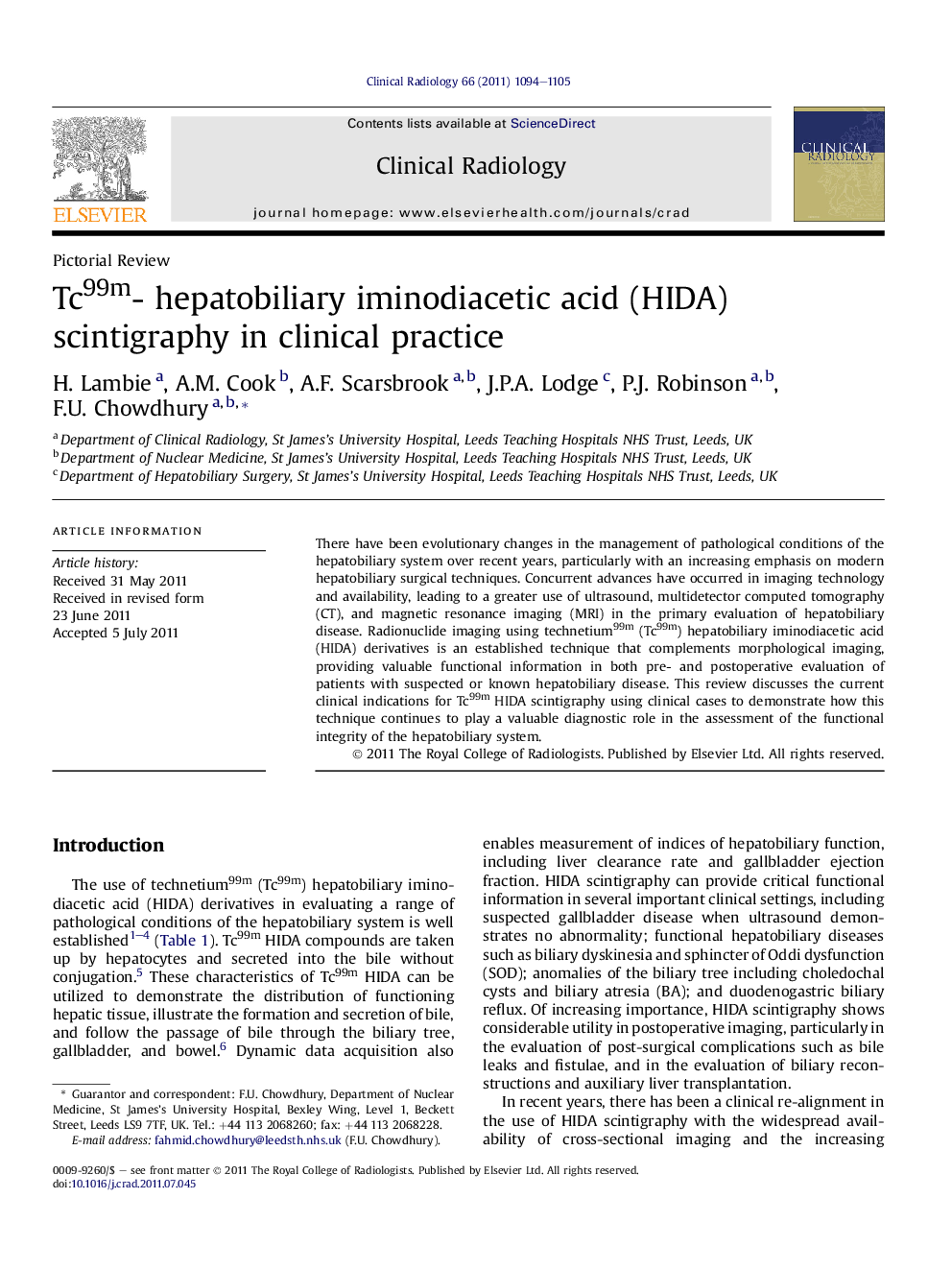| Article ID | Journal | Published Year | Pages | File Type |
|---|---|---|---|---|
| 3981808 | Clinical Radiology | 2011 | 12 Pages |
There have been evolutionary changes in the management of pathological conditions of the hepatobiliary system over recent years, particularly with an increasing emphasis on modern hepatobiliary surgical techniques. Concurrent advances have occurred in imaging technology and availability, leading to a greater use of ultrasound, multidetector computed tomography (CT), and magnetic resonance imaging (MRI) in the primary evaluation of hepatobiliary disease. Radionuclide imaging using technetium99m (Tc99m) hepatobiliary iminodiacetic acid (HIDA) derivatives is an established technique that complements morphological imaging, providing valuable functional information in both pre- and postoperative evaluation of patients with suspected or known hepatobiliary disease. This review discusses the current clinical indications for Tc99m HIDA scintigraphy using clinical cases to demonstrate how this technique continues to play a valuable diagnostic role in the assessment of the functional integrity of the hepatobiliary system.
